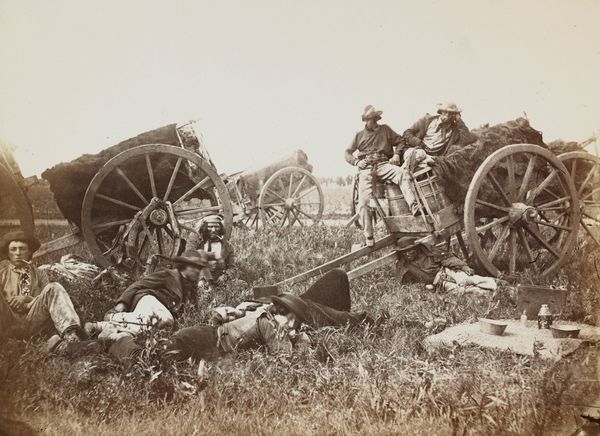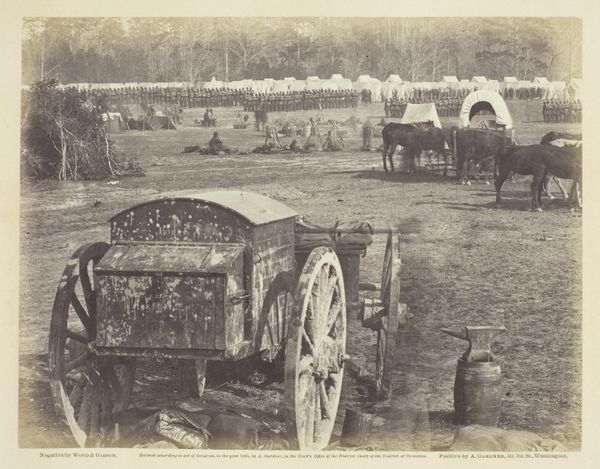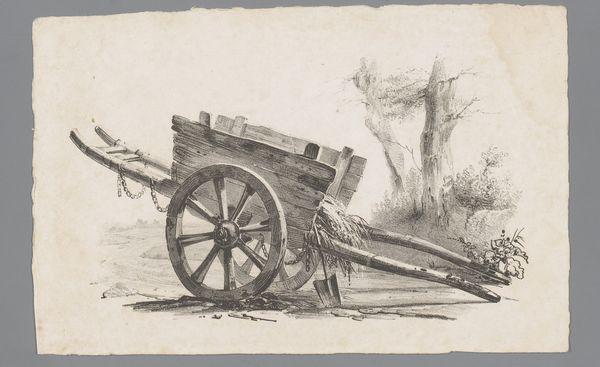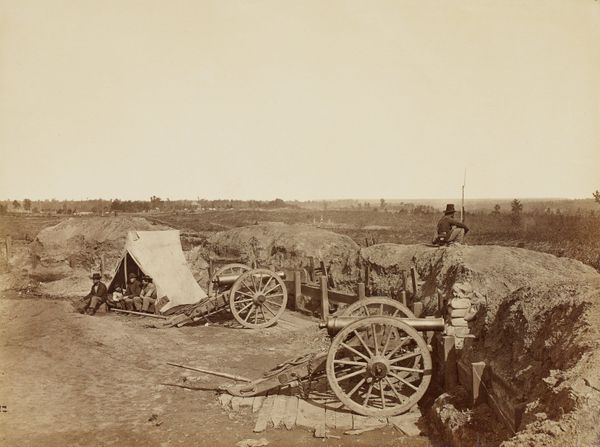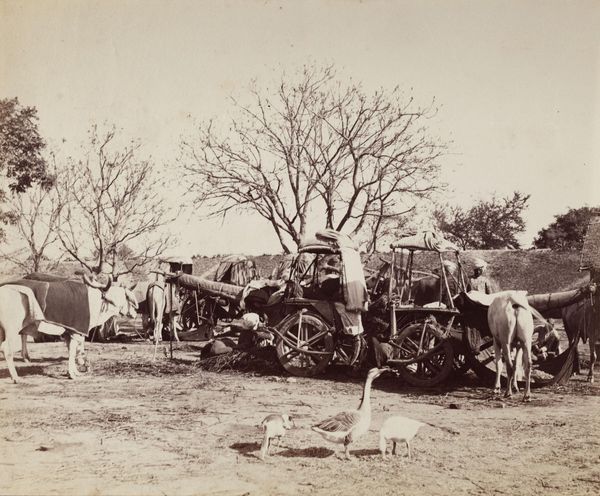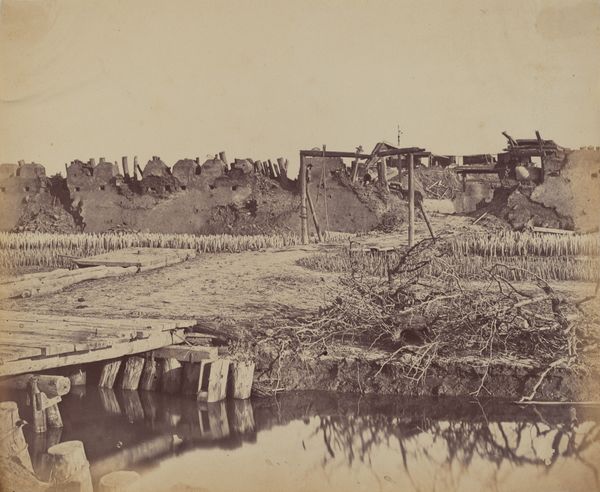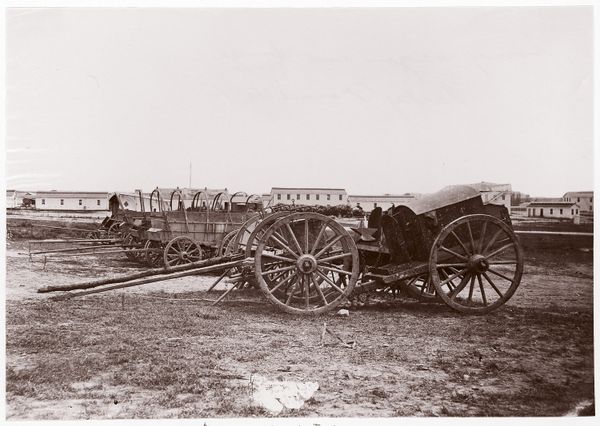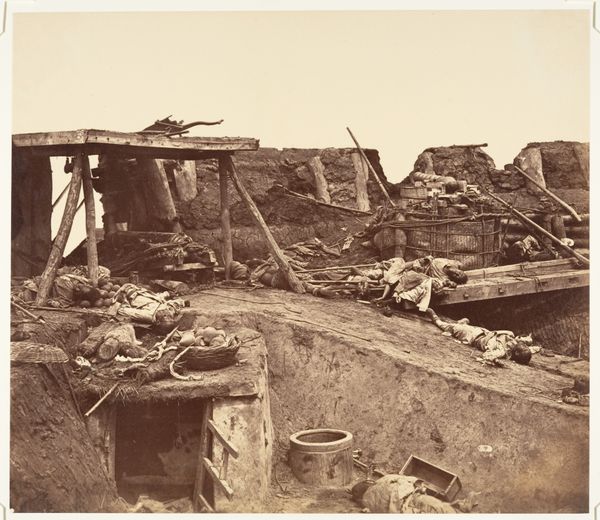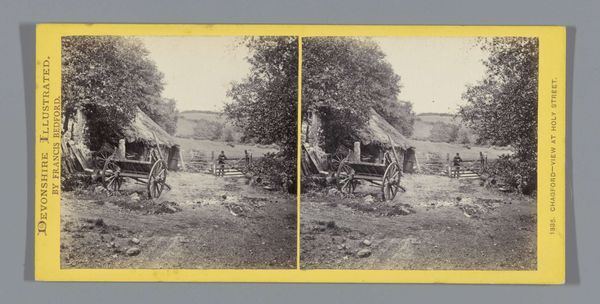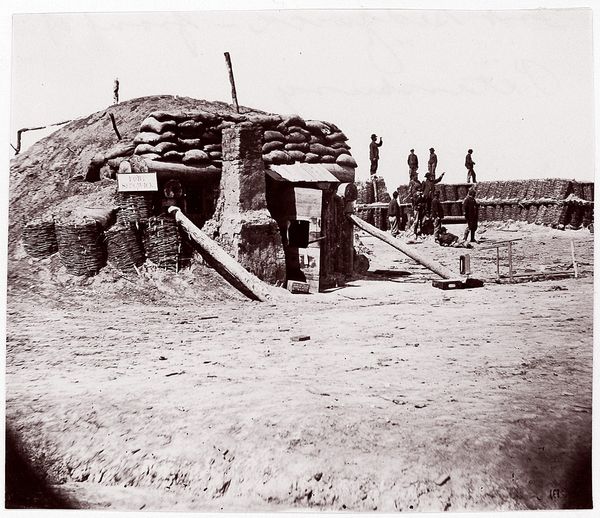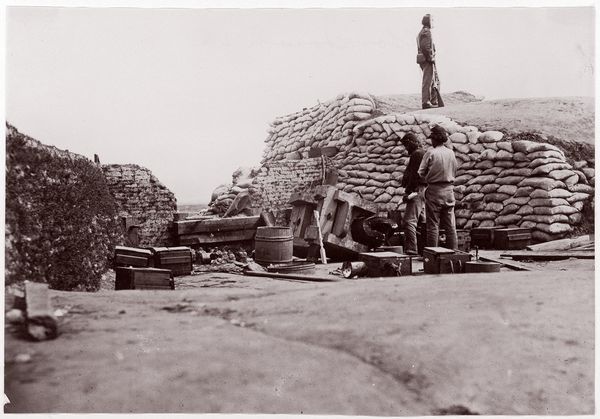
Interior of Pehtang Fort Showing the Magazine and Wooden Gun, August 1, 1860 1860
0:00
0:00
photography, albumen-print
#
landscape
#
photography
#
orientalism
#
albumen-print
Dimensions: image: 24.2 × 28.7 cm (9 1/2 × 11 5/16 in.) mount: 25 × 31.1 cm (9 13/16 × 12 1/4 in.)
Copyright: National Gallery of Art: CC0 1.0
Editor: This is "Interior of Pehtang Fort Showing the Magazine and Wooden Gun, August 1, 1860," a landscape photograph by Felice Beato. It's printed with the albumen process. It feels heavy, weighed down by the ropes, the cannons, the very dust it seems to be coated in. What jumps out at you when you look at this work? Curator: You nailed that initial feeling. What strikes me is the staged quality. It’s almost a tableau vivant of war's aftermath, wouldn’t you say? The figures seem placed, not caught in action, and the light, oh, that hazy light! It washes over everything, softening the harsh reality I imagine was really present. Editor: Yes, they do seem posed. How does that posing influence its historical significance? Curator: Ah, there's the rub. Photography, then, was seen as truth. Beato, however, was a master storyteller. He’s not just recording; he's crafting a narrative, one that likely favors a particular view of the conflict – the Western perspective, I suppose? That softness, the ordered chaos, could be subtly manipulating the viewer. I mean, does it feel truly chaotic, or carefully constructed to evoke that feeling? Editor: Constructed, I think, which feels… a little manipulative now that you mention it. Curator: Exactly! And there's beauty even in the destruction. Think of the composition, the textures, the lines created by the cannons. The decay. Are we supposed to recoil in horror, or admire the photograph itself? That’s the unsettling power here, don't you agree? It lingers in the uncomfortable space between observation and interpretation, right? Editor: Definitely. I hadn’t really considered the photographer's perspective influencing the document itself. It's less straightforward than I initially thought. Curator: And isn’t that the beauty of art history? Peeling back the layers and seeing not just what *is* there, but also how it got there. Food for thought indeed.
Comments
No comments
Be the first to comment and join the conversation on the ultimate creative platform.
